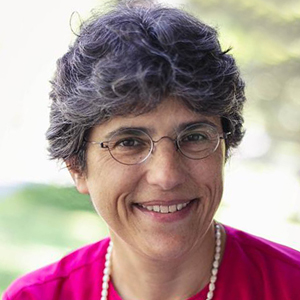Every Easter morning, in the pre-dawn hours, a pickup truck full of Moravian musicians stops at the corner outside my family’s home in Winston-Salem, N.C., and the sound of “Sleepers, Wake” floods the neighborhood.
It is a resonance heard throughout the city as Moravian bands roam the streets, preparing a community to receive the news of Christ’s resurrection. Played for saint and sinner alike, that jarring but grace-filled music is but one of many symbols in the public witness of the Moravian Church, Southern Province.
The Moravians were founded in 1457 by followers of Czech preacher and reformer John Hus, martyred by Catholics at the Council of Constance in 1415. The church flourished in Bohemia and Moravia for 200 years before undergoing a prolonged period of suppression after the Thirty Years’ War. In 1722, a group of believers fled to Saxony, where they established a settlement protected by Lutheran nobleman Count Nicholas von Zinzendorf.
In 1741, they came to the American colonies, founding the Pennsylvania towns of Bethlehem and Nazareth. By 1753, they were in North Carolina territory, forming communities such as Bethabara, Bethania and Salem (now Winston-Salem) and sharing Christian witness with the Cherokees. These endeavors reflected the Moravian missionary impetus, some of the earliest Protestant mission efforts.
Today in Winston-Salem, the Moravians’ witness continues to shape and influence the larger community through a variety of powerful public traditions that chart the Christian year. These observances are not mere rituals but important life events that sustain Moravians and non-Moravians alike.
Perhaps the best-known of those witnesses is the “lovefeast,” a tradition inspired by the earliest agape meals shared by first-century Christians (“They met constantly to hear the apostles teach, and to share the common life, to break bread, and to pray,” Acts 2:42 NEB) and reinstituted by Count Zinzendorf in 1727. These simple services include prayer, Scripture, hymns and food -- usually sweetened buns and coffee, sometimes juice -- in a tradition that has become, if not a sacrament, then sacramental within the gathered community.
Although celebrated throughout the year, Moravian lovefeasts may be the most widely attended Christmas Eve events in Winston-Salem. Many congregations conduct multiple services, packed with families that have long made the lovefeast a part of their Christmas observances. Moravian friends inform me that in some churches, at the final Christmas Eve lovefeast, the bone-tired minister may discover a “light libation” slipped into his coffee. Holy spirits, no doubt!
Even as many Christians continue to debate the nature of the Lord’s Supper and its appropriate constituency, the lovefeast offers a nonsacramental gathering place for persons inside and outside the church, welcoming all to the literal and figurative sweetness of a communal moment. The lovefeast held in early December in Wait Chapel on the Wake Forest University campus, for example, is the community’s largest Christmas lovefeast, filling the 2,300-seat chapel every year.
Then there is Easter, when Winston-Salem Moravians invite thousands to the largest sunrise service in the state, gathering at dawn in God’s Acre, the Old Salem cemetery, to celebrate Christ’s resurrection. This communal, ecumenical event transcends Christian divisions through a distinctively Moravian but thoroughly welcoming religious observance.
The promise of resurrection is also evident in the way the Moravians bury their dead. Recently, when the mother of a Moravian friend passed away, I found myself deeply moved, not only by the litany for the burial of the dead read collectively at her funeral, but also by the presence of a cross-generational Moravian band gathered at the graveside. Their hymnody brought hope and promise to all of us who had come to send her on her way.
The band itself was testimony to the deep familial nature of Moravian community, from the gangly teenager playing clarinet to the senior adult playing tuba, perched on the seat of his walker. Whatever the communion of saints means in this world or the next, the music and configuration of that Moravian band was a witness to the promise of faith and the celebration of life within Christian community.
These are but a few of the rituals and events that demonstrate the witness of Moravians in their Southern Province, centered in the Piedmont region of North Carolina. The Moravians may be the third-largest Protestant communion in our county, after Baptists and Methodists, but their public impact far exceeds their numbers.
Clearly, the Moravians have welcomed persons from varying faith traditions into such public observances as the lovefeast and the Easter sunrise service. Their superb hymnody and cross-generational music education provide a ready community of musicians for the church and the broader society. The historical continuity provided by the village of Old Salem offers residents and tourists alike a sense of identity, representing -- indeed, re-enacting -- the origins of European settlement of the region.
But perhaps their most enduring contribution to Winston-Salem is the presence of a multitude of Moravian congregations, each unique yet gathered around shared history and liturgy. Each offers the ministry of presence to persons inside and outside the church, feeding the hungry, clothing the naked and bringing good news to the poor.
At the dawn of the modern period, Methodist founder John Wesley made this journal entry for May 24, 1738:
In the evening I went very unwillingly to a [Moravian] society in Aldersgate Street, where one was reading Luther’s preface to the Epistle to the Romans. About a quarter before nine, while he was describing the change which God works in the heart through faith in Christ, I felt my heart strangely warmed. I felt I did trust in Christ, Christ alone, for salvation; and an assurance was given me that He had taken away my sins, even mine, and saved me from the law of sin and death.
Through great ecclesial traditions, the Moravian Church continues its welcoming Christian witness in Winston-Salem and the world, strangely warming our postmodern hearts.









